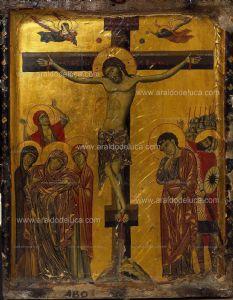
Ancien city of Leptis Magna
Lepcis Magna is a wonderful archaeologic site, a city where a visitor can trace their settlement from Punic times straight through to late Byzantine. Before Roman rule, Lepcis was a trading post for Carthaginian merchants. In this city born the Roman emperor Septimius Severus, like shows the Arch of Septimius that is recostructed in Lepcis. Its original friezes, now in Tripoli , have been replaced with replicas. Lepcis'own newly opened museum holds many portrait busts found along the celebrated colonnaded way, as well as two Aphrodites from the baths. There are also the mythological hero, Castor and Pollux, taken from the theater and a stone elephant.The arrival of water and marble in Leptis early in the 2nd century BC prompted the Emperor Hadrian to commission the baths bearing his name, which became one of the social hubs of the city. The latrine are in marble.
In c. A.D. 196, Septimus began a reconstruction of Lepcis. The project entailed the construction of a Severn Forum decorated with Gorgon head, carved figures all around the build. A wall separate the Severn Forum from the Severn Basilica and Civil Basilica, later converted to a Byzantine church.There are also the Amphitheater and the Temple dedicated to his family. In this time was built the Market, built in 9-8 bC and rebuilt during the reign of Septimus Severus and the Harbor. The magnificent art and architecture at Lepcis was meant to display the majesty and power of Severus dynasty. In this time was built also the beautiful theater, looking at the stage with the Sea in the background. In the area of the Ancient Forum there is the Temple of Liber Pater , the temple of Roma and Augustus , the Temple of Ercules . The ancient area shows many others archaeological site, like the Tiberio Arch , the Colonnata street, the Nimphaeum and the Oea Door. There are also the Hunting bath, the Palaestra and the beautiful mosaics that decorate a portico at the 20-room, on the seaside Villa Silin, just west of Lepcis. The floor is decorated with sea nymphs and a boat, quacking ducks and amphora-helmeted pygmies, sea scenes hunting

